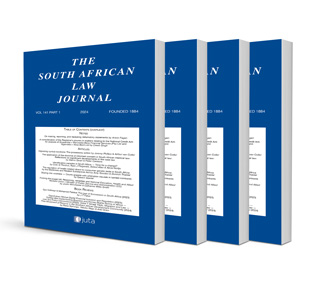Abstract
This article discusses an important trend in recent judgments of our appellate courts, which I call ‘common-law avoidance’. Rather than applying established sets of common-law principles, the courts have chosen to substitute them with other sets of norms of their own invention, usually sourced in the Constitution. This marks a departure from the status quo ante, in which it was accepted that the impact of the Constitution on private-law disputes was to be felt through the common law, rather than by displacing it. I discuss three cases that evidence this new pattern, spanning the three branches of the law of obligations: AB v Pridwin Preparatory School, which implicated the law of contract; Esorfranki Pipelines (Pty) Ltd v Mopani District Municipality, involving delict; and Greater Tzaneen Municipality v Bravospan 252 CC, which raised an issue in the law of unjustified enrichment. I critically assess the trend exhibited in these cases, arguing that it is the result of (among other factors) the courts’ preference for the Constitution’s more familiar and discretionary standards, and of their increasing difficulties in meeting the demands of the common-law method.

